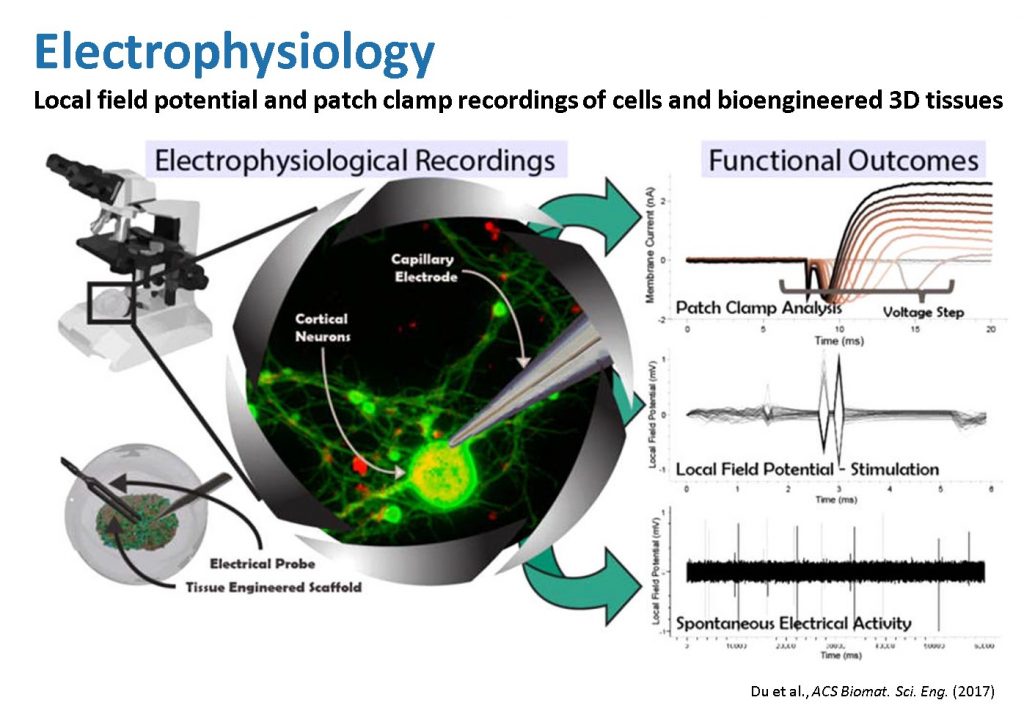
Electrophysiological recordings are used to examine cellular functions and to assess functional outcomes of 2D neuronal cell cultures and 3D engineered brain-like tissues. Techniques used include whole-cell patch clamp and extracellular local field potential recordings, multi-electrode arrays, as well as optical imaging using voltage-sensitive dyes and/or genetically expressed fluorescent proteins. By studying the bioelectrical activity of excitable cells such as neurons, information about the resting membrane potential, frequency and amplitude of spontaneous and evoked action potentials, and synaptic interactions between cells can be used to evaluate and characterize engineered tissues and provide insight into pharmacological interventions in our various disease models.